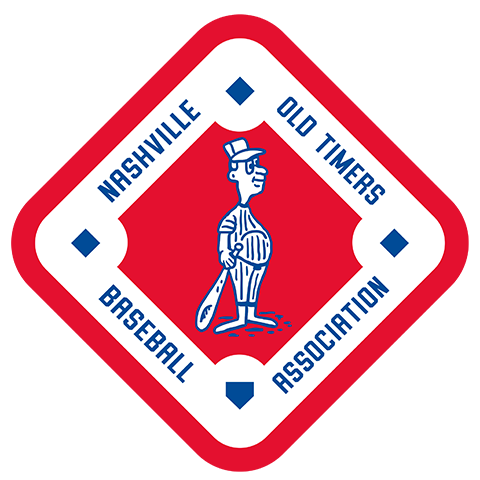
In the early 1700s, pioneers discovered a special place on the banks of the Cumberland River where a natural sulphur spring flowed, and deer and other wildlife licked the mineral salt. Named French Lick Branch, the creek ran through “Sulphur Spring Bottom”, a low-lying section of Nashville that soon became the city park where picnics, horse racing, and other leisurely events happened – including ball games.
On June 1, 1841, the Republican Banner reported that J. H. Bransford, a partner in the dry goods business of Maulding & Bransford, found an opportunity to refit the spring for bathing purposes.
“I have obtained from the Corporate Authorities of Nashville, the privilege of refitting up the Sulphur Spring, known as the Lick Branch, with the express understanding, that I am in no case whatever to charge citizens or strangers visiting the Spring for the use of the water, excepting when bathing.”[1]
The city allowed Bransford to take on the project, but being the entrepreneur that he was, however, J. H. would certainly offer “fruit, cigars, &c.” for sale.
In the same notice to announce his venture, Bransford acknowledged a chemical analysis on the water of the spring had been performed by a “Professor Bowen” in 1827. George T. Bowen, Professor of Chemistry at the University of Nashville, was the one who first tested the sulphur water (according to a November 18, 1928 death notice in the Hartford Courant, young Dr. Bowen had passed away at the age of 28[2]. Hopefully, his demise did not come about from inhaling the pungent sulphur during his assessment.)
Not to merely trust Bowen’s report, Bransford had a new test performed by Dr. Gerard Troost, Tennessee State Geologist, who moved to the area in 1928 from Indiana to become a professor of mineralogy and chemistry at the University of Nashville and was probably a colleague of Bowen. Undoubtedly, Troost suffered no ill health from his inspection of the sulphur spring, as he died in 1850 as a result of a cholera outbreak in Nashville.[3]
The Republican Banner article goes on to list the findings of both distinguished chemist’s inspections:

Dr. Troost’s results proved the close resemblance of Nashville’s sulphur spring composition to that of Harrogate Springs in England. Today, the establishment is the oldest bottler of water, dating back to the 16th century.[4] By comparing the mineral content of a world-famous sulphur spring, to one discovered only a few decades before, Bransford was establishing the quality of the resort he was to build.
Being ever the entrepreneur, Bransford made on further appeal to the general public:
“Should the citizens think the service I have, and will render, worthy of compensation however small the contribution, it will by [sic] thankfully received by Your fellow citizen, JACOB. H. BRANSFORD.”[5]
Bransford, Bowen, nor Troost could have conceived, yet even imagined, the historical significance of what would become Sulphur Dell. Only a few years after the second testing of the spring, the need arose for a specific area to play “base ball.” The game that was flourishing in the North before the Civil War had made it’s way to Nashville, and a portion of the low-lying area eventually came to be known as Athletic Park before Grantland Rice dubbed it “Sulphur Dell” in 1908.
The nearby springs added something to the ballpark’s mysterious smell, flavor, and mystique for years to come, and the memories many have of the old ballpark usually include a reference to the magical odor.
[1] Nashville Republican Banner, June 1, 1841, p. 2.
[2] Hartford Courant, November 18, 1828, p. 3.
[3] Gerard Troost (1776-1850), Geologist. http://faculty.evansville.edu/ck6/bstud/troost.html retrieved January 28, 2020.
[4] Harrogatespring.com. http://www.harrogatespring.com retrieved January 28, 2020.
[5] Nashville Republican Banner, June 1, 1841, p. 2.
© 2020 by Skip Nipper. All Rights Reserved.
Tennessee State Archives and Library Image
In the early 1700s, pioneers discovered a special place on the banks of the Cumberland River where a natural sulphur spring flowed, and deer and other wildlife licked the mineral salt. Named French Lick Branch, the creek ran through “Sulphur Spring Bottom”, a low-lying section of Nashville that soon became the city park where picnics, horse racing, and other leisurely events happened – including ball games.
On June 1, 1841, the Republican Banner reported that J. H. Bransford, a partner in the dry goods business of Maulding & Bransford, found an opportunity to refit the spring for bathing purposes.
“I have obtained from the Corporate Authorities of Nashville, the privilege of refitting up the Sulphur Spring, known as the Lick Branch, with the express understanding, that I am in no case whatever to charge citizens or strangers visiting the Spring for the use of the water, excepting when bathing.”[1]
The city allowed Bransford to take on the project, but being the entrepreneur that he was, however, J. H. would certainly offer “fruit, cigars, &c.” for sale.
In the same notice to announce his venture, Bransford acknowledged a chemical analysis on the water of the spring had been performed by a “Professor Bowen” in 1827. George T. Bowen, Professor of Chemistry at the University of Nashville, was the one who first tested the sulphur water (according to a November 18, 1928 death notice in the Hartford Courant, young Dr. Bowen had passed away at the age of 28[2]. Hopefully, his demise did not come about from inhaling the pungent sulphur during his assessment.)
Not to merely trust Bowen’s report, Bransford had a new test performed by Dr. Gerard Troost, Tennessee State Geologist, who moved to the area in 1928 from Indiana to become a professor of mineralogy and chemistry at the University of Nashville and was probably a colleague of Bowen. Undoubtedly, Troost suffered no ill health from his inspection of the sulphur spring, as he died in 1850 as a result of a cholera outbreak in Nashville.[3]
The Republican Banner article goes on to list the findings of both distinguished chemist’s inspections:

Dr. Troost’s results proved the close resemblance of Nashville’s sulphur spring composition to that of Harrogate Springs in England. Today, the establishment is the oldest bottler of water, dating back to the 16th century.[4] By comparing the mineral content of a world-famous sulphur spring, to one discovered only a few decades before, Bransford was establishing the quality of the resort he was to build.
Being ever the entrepreneur, Bransford made on further appeal to the general public:
“Should the citizens think the service I have, and will render, worthy of compensation however small the contribution, it will by [sic] thankfully received by Your fellow citizen, JACOB. H. BRANSFORD.”[5]
Bransford, Bowen, nor Troost could have conceived, yet even imagined, the historical significance of what would become Sulphur Dell. Only a few years after the second testing of the spring, the need arose for a specific area to play “base ball.” The game that was flourishing in the North before the Civil War had made it’s way to Nashville, and a portion of the low-lying area eventually came to be known as Athletic Park before Grantland Rice dubbed it “Sulphur Dell” in 1908.
The nearby springs added something to the ballpark’s mysterious smell, flavor, and mystique for years to come, and the memories many have of the old ballpark usually include a reference to the magical odor.
[1] Nashville Republican Banner, June 1, 1841, p. 2.
[2] Hartford Courant, November 18, 1828, p. 3.
[3] Gerard Troost (1776-1850), Geologist. http://faculty.evansville.edu/ck6/bstud/troost.html retrieved January 28, 2020.
[4] Harrogatespring.com. http://www.harrogatespring.com retrieved January 28, 2020.
[5] Nashville Republican Banner, June 1, 1841, p. 2.
© 2020 by Skip Nipper. All Rights Reserved.



